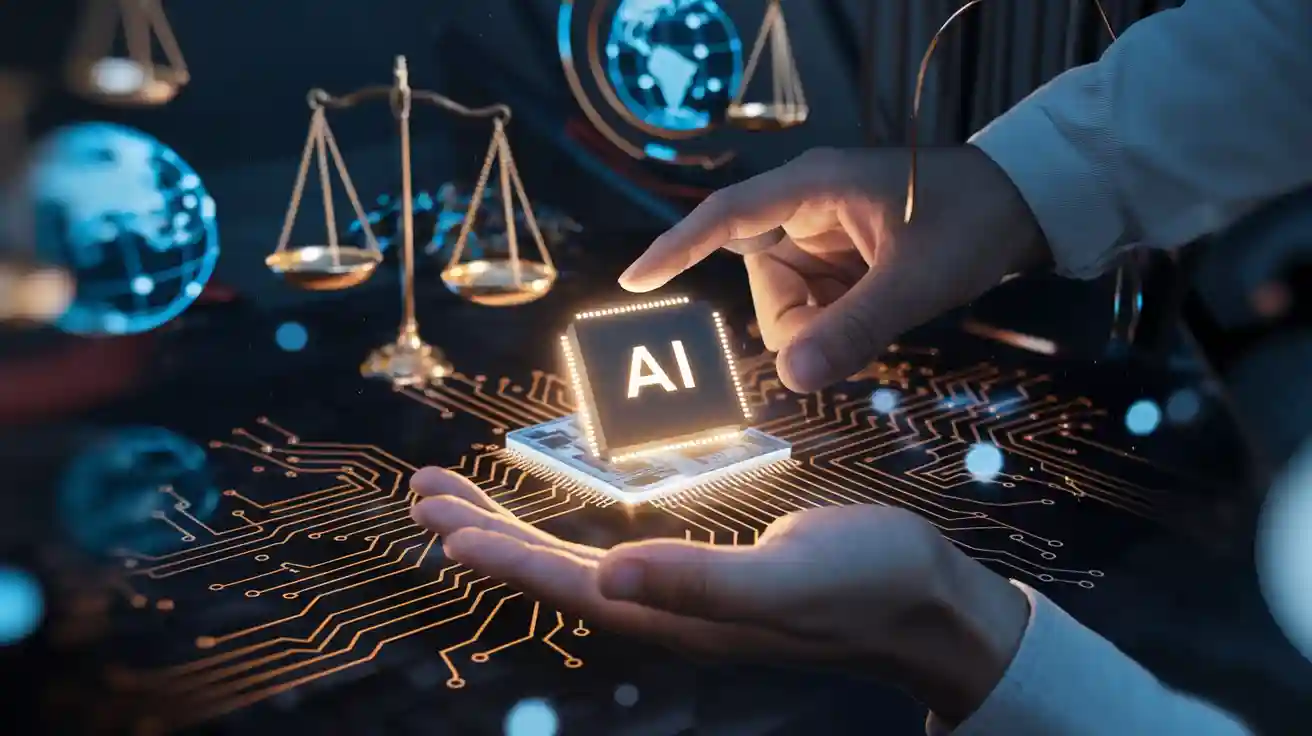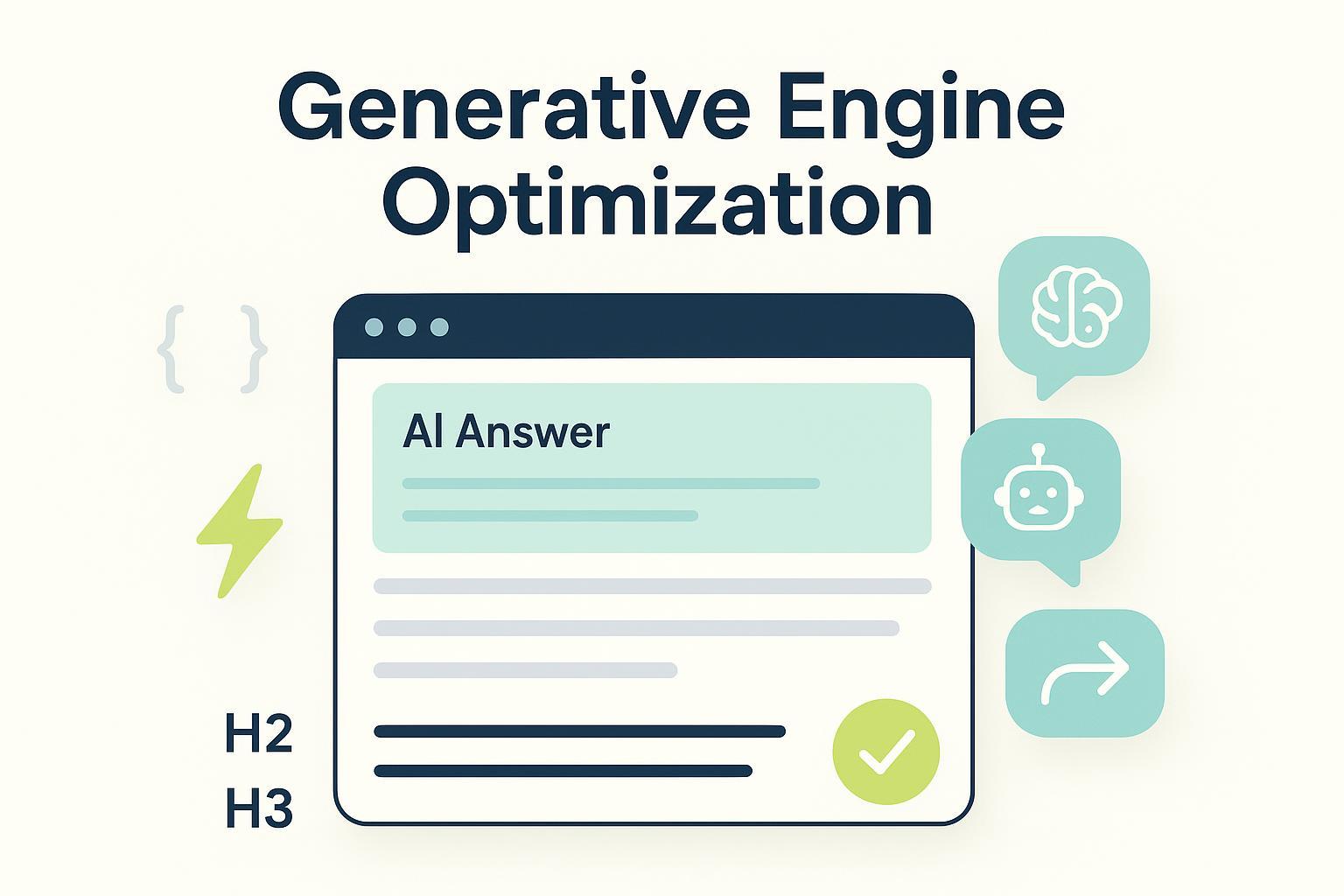Ethical Considerations in Generative Engine Optimization
Explore ethical considerations in generative engine optimization, addressing bias, misinformation, privacy, and fairness to ensure responsible AI practices.


Generative Engine Optimization (GEO) improves AI to meet certain goals. It helps decide how AI-made content affects people and society. When you use these smart systems, you see their impact on ideas, choices, and information. Ethical considerations are important because GEO changes fairness and trust online. Solving these issues ensures that AI helps people safely and includes everyone.
Key Takeaways
AI bias can cause unfair results. Check and fix training data often to treat all groups fairly.
Wrong information from AI can hurt people. Use strong content checks and teach users to build trust.
Keeping data private and safe is very important. Use encryption and follow rules to protect user info and keep trust.
Knowing copyright laws is important. Stay updated on legal changes to avoid problems with AI-made content.
Teamwork is important for solving ethical problems. Work together to make AI systems fair and responsible.
Ethical Considerations in GEO
Bias in AI systems
Bias in AI is a big ethical problem in GEO. AI models often pick up biases from the data they learn from. These biases can cause unfair results in areas like healthcare, jobs, and schools. For example, some healthcare tools have shown racial bias. They favored White patients over Black patients because of cost rules. This shows how society's biases can sneak into AI, causing unfair health outcomes for some groups.
Here’s how bias shows up in AI systems:
Evidence Description | Implication |
|---|---|
Healthcare data with societal biases trains AI unfairly. | Causes unequal health outcomes for certain groups. |
A healthcare tool favored White patients over Black patients. | Shows racial bias in AI decisions. |
AI in schools might reduce bias but can't fix discrimination. | Shows AI needs careful use in education. |
Fixing these biases helps make AI fair and inclusive. This means picking better training data and checking for bias often.
Misinformation risks
Generative AI can spread fake information very quickly. You might have seen fake AI-made content that looks real. This can cause big problems, like money loss or public fear. For example, a fake AI image of the Pentagon exploding hurt the US stock market. Deepfake scams and fraud also show how risky generative AI can be.
Here are some examples of misinformation risks:
A fake AI image of a Pentagon explosion hurt the stock market (Bond, 2023b).
Deepfake scams have tricked many people (Davies, 2024; Al-Siabi, 2023).
Generative AI has been used for fraud and blackmail (Lo, 2023; Goodin, 2023; Fischer, 2021).
To stop misinformation, you need strong content checks and user education. This builds trust and ensures AI is used responsibly.
Privacy and data security
Privacy and security are key in generative engine optimization. AI needs lots of data to work well, but this data can include private details. If not handled safely, it can lead to data leaks or identity theft. When using generative AI, you must protect data during collection, storage, and use. If not, private user info could be exposed, breaking trust and ethical rules.
For example, AI might create content using private data, sharing secrets by mistake. This breaks privacy and harms the trust in AI systems. To fix this, use strong encryption, collect only needed data, and follow rules like GDPR or CCPA.
By focusing on privacy and security, you make AI safer and build trust with users.
Intellectual property challenges
Generative AI is changing how intellectual property laws work. It creates problems for artists and companies. AI often uses copyrighted works to learn, which raises questions. Who owns the content, and is it fair to use? Courts are now deciding if using copyrighted material to train AI is allowed. This makes copyright rules harder to understand.
For example, lawsuits against OpenAI and Stability AI show these issues. Artists say their work was used without asking to train AI. Music publishers also claim AI copies lyrics without permission. These cases show how AI can break copyright laws by accident.
Governments are working to fix these problems. The US Copyright Office is reviewing copyright laws for the first time in 50 years. They are focusing on generative AI. In the UK, new rules are planned for 2025 to control how AI uses protected data. These changes aim to protect creators while allowing innovation.
As AI grows, you need to learn about these legal updates. Knowing about intellectual property problems helps you avoid breaking the rules.
Malicious use of generative technologies
Generative AI can be used in harmful ways. For example, scammers use AI to make fake identities. In one case, a company lost $26 million because of an online trick. The scammers used AI to pretend to be real people in a meeting.
In healthcare, bad actors use AI to create fake medical papers. These fake reports suggest unneeded treatments, leading to false insurance claims. This hurts hospitals and messes up financial systems. Fake invoices made by AI also increase claim amounts, causing more problems.
You can fight these risks by using strong security and teaching people about dangers. Ethical thinking helps stop the misuse of generative AI. By staying alert, you make sure these tools are used safely and responsibly.
Impacts of Ethical Challenges
User trust and safety
If AI ignores ethics, it can hurt trust and safety. People expect AI to give fair and true information. But if AI spreads lies or harmful content, trust is lost. For example, fake news from AI can make people doubt its reliability. This loss of trust changes how people use AI and feel about it.
To keep trust, developers must follow ethical rules. Clear processes and regular checks ensure AI acts responsibly. When AI is fair and honest, people feel safer using it.
Business risks and liabilities
Ethical problems in AI can cause trouble for businesses. If a company’s AI breaks privacy or copyright laws, it can face fines. For example, using AI to make content might break copyright rules. This can lead to lawsuits and hurt the company’s image.
People may avoid businesses that ignore AI ethics. Companies that follow ethical rules lower risks and gain trust. By having clear policies and following laws, businesses stay safe and trusted.
Societal polarization
AI can increase divisions in society if ethics are ignored. AI often reflects biases in the data it learns from. If the data favors one group, it can exclude others. This creates unfairness and can lead to discrimination.
Fake content made by AI can mislead people and cause conflicts. For example, AI might create false stories about politics or religion, dividing communities.
AI often repeats social biases from its training data.
Generative AI may favor majority views, ignoring minority opinions.
Fake content can increase arguments and divide groups.
To reduce divisions, developers should make AI fair and inclusive. When AI respects all views, it helps create a more united society.
Long-term effects on AI innovation
Ethical problems in AI don’t just matter now—they affect the future too. If these issues aren’t fixed, they can block progress and limit what AI can do. You might ask how these problems change AI over time. The answer is in how they impact trust, use, and creativity.
For example, privacy worries make people afraid to share their data. Without good and varied data, AI can’t get better. Bias in AI also slows progress. When AI favors some groups, it doesn’t work well for everyone. This makes it less helpful and stops further growth.
Accountability is also very important for AI’s future. If creators don’t take responsibility, people lose trust in AI. This lack of trust makes people avoid new AI tools. Also, when AI only helps certain groups, it increases unfairness. Poorer communities may not get access to advanced AI, making the gap between rich and poor bigger.
Here’s a simple look at how these problems affect the future:
Ethical Problem | What It Means |
|---|---|
Privacy | Worries about how personal data is used and kept safe. |
Bias | Unfair treatment of different groups by AI systems. |
Accountability | Making sure someone is responsible for AI decisions. |
Job Loss | How AI might replace jobs and change work. |
Social Unfairness | Unequal access to AI making existing problems worse. |
Resistance to Change | Old companies struggling to use new AI tools. |
Tech Gaps | Poorer countries lacking the tools to use AI fully. |
These problems cause more issues over time. For instance, AI taking jobs means industries must rethink how they work. Old companies that resist change slow down the use of new tools. Poorer countries with weak tech can’t enjoy AI’s benefits.
To keep AI growing, we need to solve these ethical problems. By focusing on fairness, honesty, and including everyone, we can make AI useful for all and help it drive progress.
Strategies for Ethical GEO
Transparency in AI processes
Transparency means being clear about how AI works. People need to know where AI gets its information. This helps them trust the system and make smart choices. Without transparency, users might worry if AI is fair or accurate.
Here’s how to make AI more transparent:
Explain how AI creates content and what data it uses.
Show where the training data for AI comes from.
These steps help people trust AI and protect your brand’s reputation. When users understand AI’s process, they feel safer using it.
Tip: Add labels to show when content is made by AI. This builds trust and makes things clearer.
Accountability in development
Accountability means taking responsibility for what AI does. Everyone involved—developers, companies, and users—must ensure AI acts ethically. Ethical concerns can’t be ignored or left to chance.
Here are some ways to stay accountable:
Best Practice | What It Does |
|---|---|
Helps track models and check if they follow rules. | |
Use tools to check AI risks often. | Makes sure AI stays fair and secure. |
Follow ethical rules for AI use. | Keeps AI actions within safe and legal limits. |
Match AI rules with global laws. | Prepares for changes in regulations worldwide. |
Make AI decisions easy to explain. | Shows fairness and builds user trust. |
Create reports about AI compliance. | Helps meet legal requirements quickly. |
Form a team to manage AI rules. | Ensures transparency and solves problems fast. |
Before using AI, check how it might affect people and society. After it’s running, watch for issues like fairness and security. Fix problems quickly with a clear plan.
By balancing rules with rewards, you can keep AI ethical while encouraging innovation.
Fairness in training data
Fairness in training data stops AI from being biased. The data used to train AI decides how it behaves. If the data has biases, the AI will copy them, leading to unfair results.
To make training data fair:
Use data that includes many different perspectives.
Check training data often to find and remove biases.
Avoid using only majority opinions, which can ignore smaller groups.
For example, if training AI for hiring, include candidates from all backgrounds. This stops the AI from favoring one group unfairly.
Note: Fairness isn’t just avoiding harm—it’s about promoting equality for everyone.
Fair training data makes AI work better for all users. It improves results and builds trust in the technology.
Content moderation practices
Content moderation helps keep AI-made content safe and ethical. Without it, AI content might mislead people or break rules. Using good moderation methods lowers these risks and builds trust in AI.
One way to moderate is by labeling AI-made content. Clear labels help people understand the content better. This makes them less likely to be tricked or harmed by it. Having the same rules for all content, whether made by humans or AI, is also important. These rules make sure content is handled fairly and responsibly.
Key benefits of content moderation practices:
Labeling AI-made content helps users avoid being misled.
Fair rules for all content types ensure trust and accountability.
People expect truth, so moderation reduces the risk of harm.
"Labeling is a good step to reduce harm, but it’s not enough."
Teaching people about how AI works also improves moderation. When users know more about AI, they can judge content better. Combining labels, fair rules, and education creates strong and ethical moderation.
Stakeholder collaboration
Making ethical AI needs teamwork from many groups. Each group has a special job to make sure AI follows ethical rules. Working together helps solve problems like bias, privacy, and fairness.
Here’s how different groups help with ethical AI:
Stakeholder Type | Role in GenAI Life Cycle | Ethical Contribution |
|---|---|---|
Research and Development | Create and test AI systems to improve them. | Focus on making AI both smart and ethical. |
Data Engineers and Analysts | Collect and prepare data for training AI models. | Use high-quality, diverse data to make fair AI. |
Ethicists and Legal Experts | Check if AI follows ethical and legal rules. | Solve issues like bias and privacy in AI. |
Business Strategists | Match AI projects with company goals and market needs. | Make sure AI helps businesses while staying ethical. |
End-users and Customers | Share feedback to improve AI tools. | Help make AI easier to use and more trustworthy. |
IT and Operations Teams | Set up and manage AI systems for smooth performance. | Keep AI systems secure and reliable. |
Policymakers and Regulators | Create rules and standards for AI development. | Push for fairness, openness, and safety in AI. |
When everyone works together, AI becomes more balanced and fair. For example, ethicists can guide developers to fix bias issues. Users can share ideas to make AI tools better and easier to use.
Teamwork also sparks new ideas. Different views lead to creative ways to solve ethical problems. By working with all stakeholders, AI can help everyone while reducing risks.
Future Ethical Implications
Rules and policies for AI
Rules and policies are important for using generative AI ethically. As AI grows, governments and groups must set clear rules. These rules ensure fairness, safety, and responsibility. Without them, AI could harm people or misuse private data.
Some key areas for rules include:
Banned uses: Stop AI from being used in harmful ways.
High-risk systems: Strict rules for AI in healthcare or money matters.
Transparency rules: Developers must explain how AI works to protect privacy.
For example, the European Union’s AI Act sets rules for fairness and safety. Singapore also has laws to guide responsible AI use. These examples show how rules can support ethics and new ideas.
AI rules will change as technology improves. Working with rule-makers helps keep AI fair and safe. By learning about these changes, you can help make AI more trustworthy.
Keeping an eye on AI
Ethical AI needs regular checks. You can’t just make rules and stop there. Watching AI over time keeps it fair, accurate, and safe. This helps find and fix problems early.
Here are some good ways to check AI:
Look for risks like unfair treatment.
Use tools to find and fix bias in AI.
Include different views when designing AI systems.
Check AI behavior often to catch problems fast.
Measure data quality and accuracy regularly.
For example, methods like differential privacy keep data safe while AI works well. These tools protect privacy and stop leaks of private details.
By using these checks, AI can stay fair and meet ethical rules. Regular monitoring makes AI better and builds trust with people who use it.
Thinking about ethics in GEO helps AI help everyone safely. You can shape AI to be fair, safe, and inclusive. Being open, responsible, and working together are key to ethical AI.
Important Part | What It Means |
|---|---|
Being Open | Explaining how AI makes choices helps people trust it. |
Being Responsible | Good rules make sure AI is built and used carefully. |
Working Together | Involving the community makes AI fair for everyone. |
By following these ideas, you can build AI that people trust. Using AI ethically isn’t optional—it’s needed for a better world.
FAQ
What is Generative Engine Optimization (GEO)?
GEO means improving AI systems that create content. It helps these systems make text, images, or other outputs better. GEO makes sure AI content follows ethical, social, and technical rules.
How can you find bias in AI systems?
You can find bias by checking AI results carefully. Look for unfair treatment of certain groups. Regularly review training data and test AI in different situations to spot hidden bias.
Tip: Use fairness tools to check and reduce bias in AI.
Why does transparency matter in GEO?
Transparency helps people trust AI by showing how it works. Knowing where data comes from and how decisions are made builds trust. It also helps find and fix ethical problems early.
How does GEO affect user trust?
Ethical GEO makes users trust AI more. It ensures fairness, accuracy, and safety in AI content. When users know AI respects their privacy and avoids harm, they feel safer using it.
What do governments do for ethical GEO?
Governments make rules to guide ethical AI use. They set standards for fairness, privacy, and responsibility. These rules help AI benefit society and reduce risks.
Note: Learn about AI rules in your area to follow them.
See Also
Steps to Effectively Implement Generative Engine Optimization
Understanding Generative Engine Optimization: A Comprehensive Guide
The Importance of Generative Engine Optimization for B2B SaaS
Top Five Industries Benefiting from Generative Search Technology





